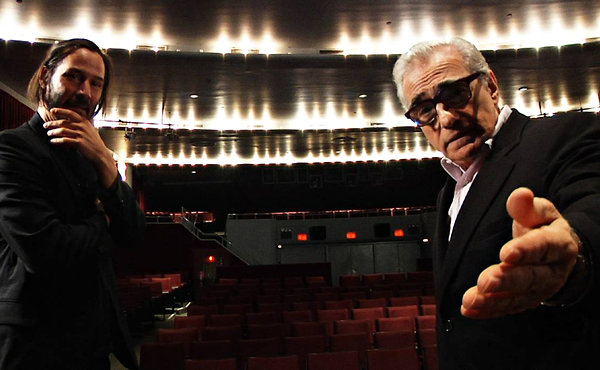 What is gained and what is lost by the motion picture industry moving from actual celluloid film to digital pixels? Does the film quality change? Does the manner of making films alter? And does all that inexorably redirect the art form?
What is gained and what is lost by the motion picture industry moving from actual celluloid film to digital pixels? Does the film quality change? Does the manner of making films alter? And does all that inexorably redirect the art form?
It is Keanu Reeves, he with the surfer dude voice in so many films, who takes on these seriously considered questions and holds his own with top directors in the sharply focused new documentary he produced with Justin Szlasa, “Side by Side” (PBS, 9 p.m., check local listings) that was written and directed by Chris Kenneally.
The change to easier-to-use digital formats, as in still photography, seems inevitable for movies even as it changes he gauzy and nostalgic film approach of the petrochemical past. It is the storytelling that remains most important, directors insist. And it is still possible to compose compelling motion picture moments without the hand-spliced considerations of film editing.
But the very process changes as well when cameras that need to have film changed after 10 minutes are replaced by digital cameras that can much longer. And when directors look into the monitors of what they’re shooting are they seeing something different than their predecessors did when they gathered to watch dailies the next morning?
They are all actually very interesting questions, laid out in direct and compelling ways by Reeves, whose only lapse as an interviewer seems to be in seemingly changing hairstyles, beards and hats with each subject as the film goes on.
Through his interviews, with a variety of directors from Martin Scorsese to James Cameron to Lana and Andy Wachowski, the pair who directed him in the “Matrix” films, he says he found that “people will speak about the unique aspects and qualities of a photochemical experience, and they’re kind of the protector of that flame. Then there’s also artists who have that feeling but through the particular story will, you know, utilize a different tool.”
Despite the availability of film shrinking along with places to have it developed, Reeves says “there still seems to be an artistic pushback that I think will help it survive in a niche way, that there will be a way that it will hang on a little bit longer.”